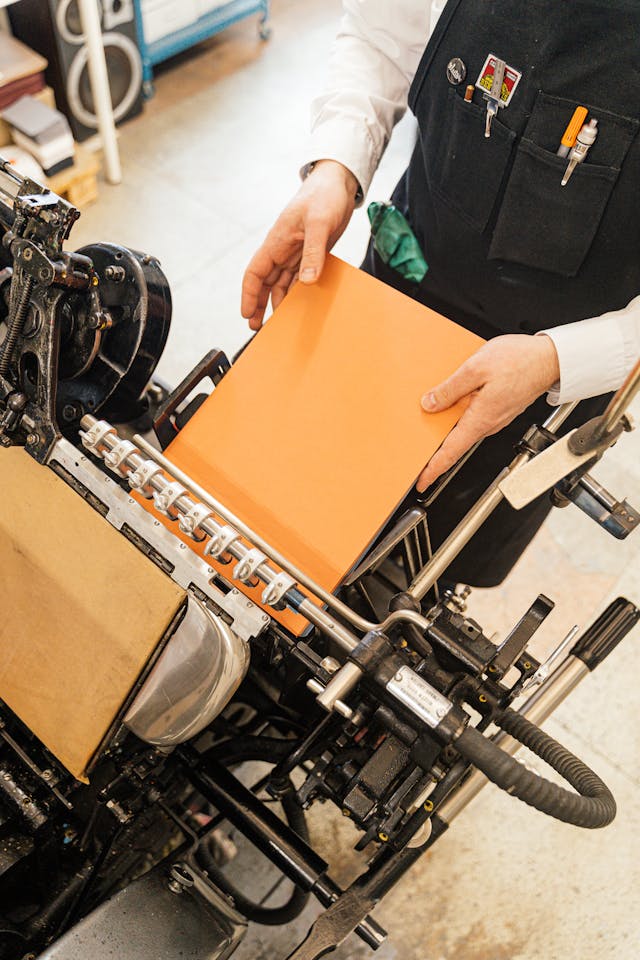What is a kraft paper making machine?
Understanding the Kraft Paper Production Process
The production of kraft paper follows the kraft pulping process because of its strong and efficient capabilities. The process begins with wood chips that undergo treatment with sodium hydroxide and sodium sulfide mixture to remove lignin and isolate the cellulose fibers. The slurry or pulp is then washed, screened, and refined to achieve the right fibrous texture. After these procedures, the pulp is placed into a kraft paper machine, where it is pressed, dried, and shaped into rolls. This methodical procedure guarantees optimal strength, porosity, and consistency in the paper.
For more in-depth information, you should view Kraft Paper Machine – UDTECH.
Components of a Kraft Paper Machine
Each component of a kraft paper machine is tailored to a critical zone in the production process, which includes:
Headbox: This is used to properly allocate the pulp over the wire section in order to ensure sheet uniformity.
Wire Section: The removal of surplus moisture from the pulp occurs here along with the initial phases of sheet formation via filtration.
Press Section: This is where later stages of moisture removal and dense paper formation occur through forced mechanical compression.
Dryer Section: The region that achieves final paper texture and moisture content. Here, the work is done through steam-heated rollers.
Calendering Section: Results in the final polish of the paper and paperboard surface smoothness, finishing the thickness uniformity and overall attractiveness.
Reel: A device that wind the completed kraft paper into rolls so that it can be conveniently shared and moved.
Types of Paper Machinery Used in Kraft Paper Production
The manufacturing of kraft paper can use different kinds of machinery, depending on the size and scope of production:
– Fourdrinier Machines: This type of machine is mostly used for the continuous production of lightweight kraft paper.
– Twin-Wire Formers: These are equipped for high-speed production of uniform single sheets.
– Cylinder Machines: These machines are preferred for the production of heavier grades of kraft paper as well as multi-ply paperboard.
– Specialty Machines: These are used when the kraft paper to be produced needs certain features, for example, increased absorbency or a definite type of surface finish.
Through the selection of suitable processes and custom machinery, producers of kraft paper are able to manufacture different kinds of paper suited for packaging, construction, and many other uses.
How does a kraft paper production line work?
Step-by-Step Breakdown of the Production Line
Pulping Processes: The first step in manufacturing paper is the pulping process; in this step, the wood chips or waste paper is placed in a cooker with a sodium hydroxide and sodium sulfide solution. The kraft process cooks wood chips and separates lignin from cellulose fibers.
Washing and Screening: The remaining pulp is washed to remove chemicals and other impurities. Then, it is screened to remove oversized particles or contaminants to ensure uniformity and quality consistency.
Bleaching (Optional): If the client demands lighter colored, or white, kraft paper, the pulp is bleached with hydrogen peroxide or other oxidizing agents.
Refining: The washed pulp is refined to alter the desired properties of the fibers, such as flexibility or bonding strength, to optimize it for the desired end product.
Sheet Formation: The refined pulp is diluted with water and put on a constantly moving screen, called a wire mesh screen. Water is removed in controlled amounts to make a continuous sheet of paper.
Pressing and Drying: The sheet is still wet; therefore, it is put between two press rolls, and then placed in drying cylinders. The remaining moisture is removed in this step, making the paper stiff.
Surface Treatment (Optional): At this stage, special coatings, smooth finishes, or surface treatments may be used for specific needs.
Reeling and Cutting: After everything is done, the kraft paper is finally wound into large rolls and sliced into various sizes appropriate for use and distribution.
The Role of Wood Pulp in the Manufacture of Kraft Paper
Wood pulp is the fundamental raw material in kraft paper production because it contains the needed cellulose fibers essential in creating the paper’s framework. Fiber character affects the paper’s strength, durability, and performance under various conditions. Fibers from softwood pulps are higher in tensile strength because they contain long fibers, while hardwood pulps are shorter and smoother, aiding in printability. The softwood-hardwood combination of wood pulp is important in meeting both industrial and consumer needs when creating kraft paper.
Efficiency Factors in a Kraft Paper Machine
Multiple technical and operational elements can impact the productivity of a kraft paper machine, including:
Automation and Speed: Automation and speeding up processes increase the value delivered by the machine and lower labor costs.
Consistency In Pulp Quality: A uniform pulp blend guarantees the consistent quality of the paper produced.
Optimized Consumption Of Energy: Energy expended during the pulping, drying, and pressing steps are best applied in a cost-effective way to mitigate damage to the environment.
Reduction Of Maintenance And Downtime: Modern diagnosis devices, alongside scheduled maintenance, enable maximum uptime through minimal disruptions.
Usage Of Raw Materials: A balanced blend of wood chips, recycled materials, and chemical additives enables an optimal cost whilst maintaining quality.
Addressing the above concerns will assist manufacturers in becoming more productive, mitigate waste across processes and stay relevant in the kraft paper production industry.
What are the benefits of using recycled kraft paper?
Environmental Impact of Kraft Paper Manufacturing
The production of kraft paper is regarded as more environmentally friendly than other forms of paper products owing to its efficient pulping process, focus on sustainability and environmental responsibility. The kraft process uses almost all parts of the wood to reduce waste, with some by-products, such as lignin, being used for energy. Moreover, the ability to produce kraft paper from recycled fibers greatly diminishes the use of virgin materials. This helps preserve forests and lowers the carbon emissions linked with the extraction of raw materials. Also, the compostable and recyclable properties of kraft paper reduce its negative effects on the environment when thrown away or when its usefulness is replaced.
Economic Benefits of Using Recycled Paper in Manufacturing
In the production of kraft paper, the use of recycled fibers offers an economical choice for the manufacturers without compromising the quality of the paper. Recycled resources consume less energy and chemicals relative to virgin wood, which lowers production costs. Furthermore, the procurement of used paper products helps smooth raw material price volatility and increases cost predictability. The enhanced strength and quality of the recycled kraft paper resulting from advanced recycling technologies also promotes the use of the paper in many applications without significant loss of performance.
Relation To Other Paper Products
Kraft paper, unlike other paper products, includes attributes such as strength, durability, and eco-friendliness. Compared to coated papers, kraft paper has a higher tensile strength, which makes it ideal for packaging and industrial purposes. Glossy and bleached paper may serve aesthetics, but they come with high chemical costs and energy costly manufacturing processes, while kraft offers unbleached or partially bleached options. In addition, it is versatile, cost-efficient, and preferred by manufacturers as well as eco-friendly consumers.
Where can I find a reliable kraft paper machine supplier?
Top Machinery Suppliers in the Industry
Some manufacturers are well-established in the area of kraft paper machinery for their reliability, innovation, and technological advancements. Companies such as UDTECH, Valmet, and Andritz lead the paper manufacturing industry. These suppliers are notable for their state-of-the-art machinery that is designed for optimal productivity and eco-friendliness. In addition, smaller local vendors and specialized equipment builders offer high-quality machinery designed for particular production requirements. Checking supplier portfolios and reviews can assist in determining a vendor that aligns with your operations.
What to Consider When Selecting a Paper Machine Supplier
Choosing the supplier is one of the most important decisions that will impact quality, operational costs, and overall productivity. As in most important decisions, the supplier’s experience in the industry, the products available, and the technology incorporated into the machines must be considered. Pay attention to the vendors who provide tailored services, such as meeting your specified production capacity and production capabilities. After purchase services like maintenance, training, and supply of spare parts greatly help in reducing downtime, which makes them equally important. Most importantly, the supplier’s compliance with environmental legislation, which is becoming more important in the modern manufacturing world, should be ensured.
An Effective Guide for Finding Deals on Machinery for Sale
When investing or making a purchase, value is determined by the balance of cost, quality, and long-term operational benefits, for competitive deals, consider looking for new and refurbished options alongside additional equipment from reliable dealers. Check and compare quotes from different suppliers for pricing and terms. Other options to improve affordability include financing, warranty coverage, bulk purchase discounts, and additional discount incentives. It would help if you also timed the purchases during industry expos or during major sales events for additional price cuts and promotional offers.
What is the cost of a kraft paper making machine?
Factors Influencing the Price of Paper Machinery
Kraft paper-making machines tend to vary in pricing for specific reasons. Some factors to pay attention to are the machine’s production capacity, its level of automation, and the materials it is designed to handle. Machines with higher production volumes, fully automated systems, and energy-conserving designs also typically have higher prices. Moreover, the machine’s brand or country of manufacture can equally have an impact on the cost. Well-known brands or machinery made in developed regions are usually expensive due to advanced manufacturing technology. Advanced manufacturing technology premiums that come with custom modifications add to the overall price.
Evaluating The Cost of Different Varieties of Kraft Paper Machines.
While evaluating the cost of Paper Machines, it is very important to classify types of kraft paper machines into categories of type and cost. For smaller-scale operations, semi-automatic systems and other smaller machines tend to be more affordable and, therefore, suitable for low-production businesses. On the other hand, large-scale industrial operations tend to need fully automated or multifunctional machines, which are generally a lot more expensive because of their greater efficiency and throughput. When comparing the different options, machine parts also need to be considered, such as installation, maintenance, and other ancillary costs. CBA is the best approach to determining optimal machine selection and meeting operational requirements while aligning with budget limitations.
How to Bargain Prices with Your Suppliers
A more methodical approach is crucial when negotiating prices for kraft paper-making machines. Start off by getting quotes from other vendors. Show them the estimate so that they can understand where the market lies. A lot of suppliers give discounts on bulk orders or extended purchases so remember to highlight the volume you intend to purchase. Additionally, ask if they have package offers that come with training, maintenance, and installation at a lesser cost. Putting effort into relationships with subcontractors and showing commitment for new orders in the future is a good way to negotiate for a discount. Lastly, try and time your negotiations around about places when suppliers may be giving discounts, such as during trade fairs or end-year sales, to further reduce costs.
How can I optimize the kraft paper production process?
Best Practices for Paper Production Efficiency
Production optimization in kraft paper involves minimizing key processes and waste and implementing lean manufacturing principles to ensure better workflows, lower downtime, and improved output quality. Also, rhythmically calibrating machinery prevents material and defect waste by ensuring consistent thickness and uniformity of the paper. The enhancement of real-time monitoring systems fully detects inefficiencies in the process, enabling prompt corrective actions that alleviate production bottlenecks. Lastly, gains in inventory management smoothen production cycles by averting material shortages and excessive stockpiling.
Improving Output with an Updated Production Line
Performance in kraft paper production can be remarkably boosted by investment in modern technology and advanced equipment. Labor costs and production both benefit from enhanced automation features available on upgraded machines. In addition to bolstering operational costs, incorporating energy-efficient frameworks works towards lowering enviromental damage. Without totally changing the production line, productivity can still be increased by retrofitting lòt existing equipment with modular enhancements, like superior drying systems or better-optimized pulp refiners. Selecting production goal-centric upgrades that align with budget limitations is much easier after conducting a cost-benefit analysis.
Maintenance Tips for Extending the Life Span of Machines
To maintain optimal productivity, it is key to perform regular maintenance on industrial machinery, and this increases the longevity of the equipment. Set up a routine maintenance plan that includes cleaning, lubricating, and inspecting the equipment’s integral parts. Reduce unplanned downtime by preemptively addressing failures due to cascading effects that result from not addressing worn or damaged parts. Employ vibration analysis and thermal imaging as predictive maintenance techniques to avert major impactful disruptions before they occur. Training staff on the basics of machinery operation and maintenance enhances workplace safety. Adoption of these measures improves operational reliability and boosts business productivity.
What is the future of kraft paper in the packaging industry?
Trends in Carton Box Paper Production
Advancements are being witnessed in the production of carton box paper as manufacturers are keeping up with market shifts and sustainability goals. One of the major focus areas of cost control is ‘lightweighting’, which reduces the weight of the paper while maintaining the strength required. Also, the proportion of recycled fibers being used is increasing because of consumer preferences and carbon footprint policies. Digitization and automation for production processes are improving efficiency, too, which enables manufacturers to satisfy high-volume demand consistently.
The Role of Kraft Paper in Eco-Friendly Packaging
Kraft paper has contributed to the development of sustainable packaging strategies, industrialized branded as ‘green’, as it serves as a remarkable defendable resource. The material can be recycled, and biodegradability makes it easy for businesses to incorporate environmentally friendly materials to achieve their objectives. In addition, it is very strong and durable, which makes it useful for storage and shipping, providing protection without using non-sustainable materials like plastics. The material can also be used with water-based inks, which permits environmentally conscious branding and marking, further supporting eco-green efforts.
A New Era of Manufacturing Kraft Paper
Kraft paper manufacturing innovation is primarily concerned with process optimization and refinement of material properties to meet the different needs of various sectors. The use of modern pulping methods has allowed manufacturers to conserve resources without compromising quality. Also, the engineering of kraft paper with specific water-resistant or barrier coatings and treatments is increasing its use in food packaging. Investigation into bio-based fillers and the use of renewable resources for energy during production strengthens the case for sustainability and environmental responsibility, setting new standards for green manufacturing.







